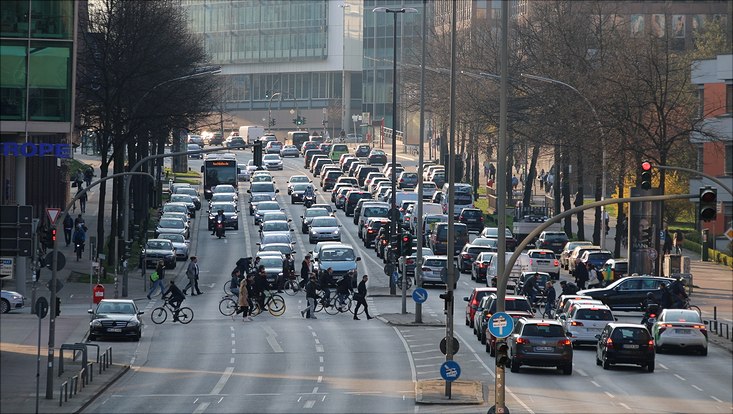27 November 2024
New study on tire and brake wearAir in Hamburg Heavily Polluted with Microplastics

Photo: UHH/CEN/Wasilewski
Anyone who lives on or walks along a busy road breathes in a considerable amount of microplastics. “In Hamburg, an average of 12% of the particulate matter on the main roads consists of tire and brake abrasion, most of which is microplastics,” says Mailin Samland, first author of the study and doctoral researcher in meteorology at the Center for Earth System Research and Sustainability (CEN) at the University of Hamburg. Microplastics are released into the air and thus into the airways primarily through abrupt braking and acceleration. Anticipatory driving, on the other hand, reduces abrasion. Samland now published these findings in collaboration with the Helmholtz-Zentrum Hereon GmbH in the journal Atmospheric Environment. X.
It is well known that microplastics and particulate matter are harmful to health. But so far, discussions have merely focused on emissions from the exhaust, ignoring tire abrasion. According to the study dense traffic and densely built-up streets in Hamburg lead to high quantities, especially on busy roads such as Max-Brauer-Allee or Stresemannstraße in Altona It also shows a significantly lower level of pollution in back streets.
The concentration of particulate matter in the urban area has so far only been recorded selectively. The researchers were able to close the gaps with the help of a digital air quality model. The computer model takes into account local emissions as well as emissions from the surrounding area and simulates how pollutants are distributed in the city. It also draws on weather data and calculates the mix of different vehicle types.
“This allows us to say where the particulate matter and thus the microplastics are concentrated in the air for the entire urban area,” explains environmental scientist Dr. Ronny Badeke from Hereon, who worked on the study. “The results can be transferred to other major cities. Similar numbers of plastic particles are floating in the air.”
Lower EU particulate matter limits were recently adopted. This means that the air in cities must get significantly cleaner. “Even these stricter values are unlikely to suffice to ensure healthy air,” says Mailin Samland from CEN. A fifth of this limit is reached by microplastics alone, plus traffic exhaust and other sources.
Journal articles: Mailin Samland, Ronny Badeke, David Grawe, Volker Matthias (2024): Variability of aerosol particle concentrations from tire and brake wear emissions in an urban area. Atmospheric Environment X, DOI: 10.1016 j.aeaoa.2024.100304
